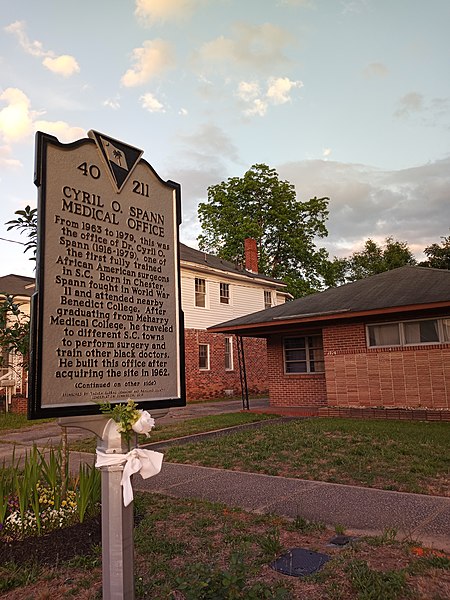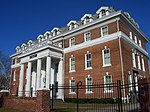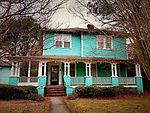Dr. Cyril O. Spann Medical Office
African-American history of South CarolinaBuildings and structures in Columbia, South CarolinaHistorically black hospitals in the United StatesHistory of Columbia, South CarolinaHistory of South Carolina ... and 8 more
History of medicine in the United StatesHospital buildings on the National Register of Historic Places in South CarolinaHospitals established in 1952Legal history of South CarolinaMeharry Medical CollegeModerne architecture in South CarolinaNational Register of Historic Places in Columbia, South CarolinaRace and health in the United States

The Dr. Cyril O. Spann Medical Office, located in Columbia, South Carolina, served African-American patients during de jure and de facto racial segregation in the United States. Built in 1963, it was added to United States National Register of Historic Places on May 20, 2019.
Excerpt from the Wikipedia article Dr. Cyril O. Spann Medical Office (License: CC BY-SA 3.0, Authors, Images).Dr. Cyril O. Spann Medical Office
Hampton Street, Columbia Waverly
Geographical coordinates (GPS) Address Nearby Places Show on map
Geographical coordinates (GPS)
| Latitude | Longitude |
|---|---|
| N 34.0106 ° | E -81.0182 ° |
Address
Saint Martin De Porres Roman Catholic Church
Hampton Street
29204 Columbia, Waverly
South Carolina, United States
Open on Google Maps









